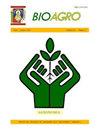Components of citrus pulp waste (eureka lemon and clementine) and yellow maize commonly used as livestock feed by south African farmers
IF 0.7
4区 农林科学
Q4 AGRONOMY
引用次数: 0
Abstract
Citrus is one of the most extensively grown fruits in several parts of the world. Therefore, its inustrial processing produces large amounts of pulp waste. This study was aimed at assessing the nutritive as well as mineral components of citrus pulp waste of Eureka lemon and Clementine from two Citrus farms while drawing potential comparisons with yellow maize for livestock feed. Proximate analyses were done using approved/standard analytical methods of the Association of Official Analytical Chemists (AOAC), while the mineral constituents were analysed using an inductively coupled plasma optical emission spectroscopy (ICP-OES). Proximate evaluation revealed that Eureka lemon and Clementine pulp waste contained comparable amounts of fibre and lipid, and significantly higher protein contents than yellow maize. Meanwhile, minerals including Ca, Mg, K, Na, Zn, Cu, Mn and Fe were significantly higher in the citrus lemon pulp waste than in yellow maize. The study therefore points out that the Citrus pulp waste have the potentials to be put to more relevant livestock nutritional use.柑橘果肉废料的成分(尤里卡柠檬和克莱门蒂)和黄玉米通常被南非农民用作牲畜饲料
柑橘是世界上几个地区种植最广泛的水果之一。因此,其工业化加工产生了大量的纸浆废料。本研究旨在评估来自两个柑橘农场的尤里卡柠檬和克莱门汀柑橘果肉废料的营养成分和矿物质成分,同时与用作牲畜饲料的黄玉米进行潜在比较。使用官方分析化学家协会(AOAC)批准的/标准分析方法进行近似分析,同时使用电感耦合等离子体发射光谱法(ICP-OES)分析矿物成分。近似评估显示,尤里卡柠檬和克莱门汀纸浆废料含有相当数量的纤维和脂质,蛋白质含量明显高于黄玉米。同时,柑橘柠檬果肉废弃物中的Ca、Mg、K、Na、Zn、Cu、Mn和Fe等矿物质含量显著高于黄玉米。因此,研究指出,柑橘果肉废弃物有潜力用于更相关的牲畜营养用途。
本文章由计算机程序翻译,如有差异,请以英文原文为准。
求助全文
约1分钟内获得全文
求助全文
来源期刊

Bioagro
Agricultural and Biological Sciences-General Agricultural and Biological Sciences
CiteScore
1.40
自引率
37.50%
发文量
22
期刊介绍:
Bioagro es una revista científica del Decanato de Agronomía de la Universidad Centroccidental “Lisandro Alvarado” (UCLA). Su periodicidad es cuatrimestral y se publica en los meses de enero, mayo y septiembre. Cada trabajo es revisado por al menos dos especialistas en el área, externos a la revista, de cuya opinión depende la aceptación definitiva. Se utiliza sistema de arbitraje doble ciego.
La revista va dirigida, fundamental pero no exclusivamente, a profesionales y técnicos del área agrícola. Su objetivo es publicar trabajos científicos originales e inéditos en ciencias agrícolas que enfoquen aspectos de agronomía, botánica y propagación de plantas, entomología y zoología, suelos, fitopatología y protección vegetal, ingeniería agrícola, genética y mejoramiento de plantas, ecología, procesamiento de productos agrícolas, biotecnología y sociales. También pueden ser publicados artículos cortos en los que se presenten descubrimientos científicos, desarrollos tecnológicos y resultados de diagnósticos integrales, en la modalidad de Notas Técnicas.
En Venezuela, se encuentra en las bibliotecas de todas las universidades e institutos de educación superior que ofrecen carreras agronómicas, así como de los entes oficiales de investigación agropecuaria. En el exterior, la revista llega a universidades y/o institutos de investigación agrícolas de todos los países de América Latina así como Estados Unidos, Canadá y España.
 求助内容:
求助内容: 应助结果提醒方式:
应助结果提醒方式:


